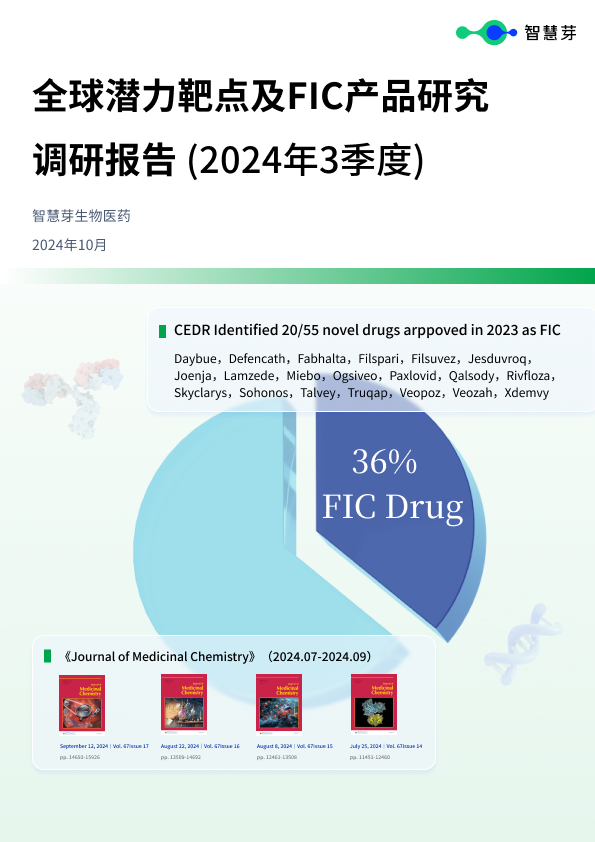Achieve Announces Completion of Target Enrollment in the Phase 3 ORCA-3 Trial
2022-09-27
SEATTLE, Wash and VANCOUVER, British Columbia, Sept. 27, 2022 (GLOBE NEWSWIRE) -- Achieve Life Science, Inc. (Nasdaq: ACHV), a late-stage clinical pharmaceutical company committed to the global development and commercialization of cytisinicline for smoking cessation and nicotine addiction, today announced that target enrollment of 750 subjects has been reached in the Phase 3 ORCA-3 trial.
Similar to the previously reported ORCA-2 trial, ORCA-3 is evaluating the smoking cessation efficacy, safety, and tolerability of 3 mg cytisinicline dosed three times daily (TID) for either 6 or 12 weeks compared with placebo. ORCA-3 participants will be monitored through 24 weeks post randomization and will receive standard behavioral support for the duration of the trial. More than 750 adult smokers have been randomized across 20 clinical trial locations in the United States. Trial sites are no longer enrolling new subjects, but those currently in screening will be allowed to participate provided they meet entry criteria. Topline results are expected to be reported in the first half of 2023.
“We are pleased to have completed enrollment in this second confirmatory Phase 3 trial that we expect will fulfill the clinical requirements for regulatory submission in the U.S., and ultimately, if approved, enable cytisinicline availability to the millions of American smokers who desperately need new treatment options to help them overcome their nicotine addiction,” stated John Bencich, Chief Executive Officer of Achieve. “We would like to extend our gratitude to the ORCA-3 clinical research teams, and importantly, the smokers who endeavored a quit attempt through participation in this study. We wish them continued success on their quit journey.”
In April 2022, Achieve announced positive, statistically significant results in its Phase 3 ORCA-2 clinical trial of cytisinicline in 810 adult smokers across 17 clinical trial locations in the United States. ORCA-2 evaluated the efficacy and safety of 3 mg of cytisinicline dosed three times daily for either 6 or 12 weeks compared to placebo in adult smokers. Both the primary and secondary endpoints demonstrated increased quit rates, showing 6-8 times increased odds of smoking abstinence when compared to placebo. Cytisinicline was well tolerated with single-digit rates of adverse events observed and no treatment-related serious adverse events reported.
If approved by the U.S Food and Drug Administration, or FDA, cytisinicline would be the first, non-nicotine smoking cessation prescription treatment made available to American smokers in nearly two decades.
For more information on cytisinicline or the ORCA-3 trial, please visit .
About ORCA-3
The ORCA-3 trial is Achieve Life Sciences’ second randomized Phase 3 trial evaluating the efficacy and safety of cytisinicline as a treatment for smoking cessation in adult smokers at 20 clinical trial locations in the United States. Smokers were randomized to one-of-three treatment arms to receive either placebo or 3 mg cytisinicline taken three times daily (TID) for a period of either 6 or 12 weeks.
Similar to the ORCA-2 trial, which was the first randomized Phase 3 clinical trial to show a smoking cessation benefit in nearly two decades, the primary outcome measure of success in ORCA-3 is biochemically verified continuous abstinence during the last four weeks of treatment in the 6- and 12-week cytisinicline treatment arms compared with placebo. Each treatment arm in the trial will be compared independently to the placebo arm. The trial will be deemed successful if either or both of the cytisinicline treatment arms show a statistical benefit compared to placebo. Secondary outcome measures will be conducted to assess continued abstinence rates through six months from the start of study treatment. ORCA-3 topline results are expected in the first half of 2023.
About Achieve and Cytisinicline
Achieve’s focus is to address the global smoking health and nicotine addiction epidemic through the development and commercialization of cytisinicline. Tobacco use is currently the leading cause of preventable death that is responsible for more than eight million deaths worldwide and nearly half a million deaths in the United States annually.1,2 More than 87% of lung cancer deaths, 61% of all pulmonary disease deaths, and 32% of all deaths from coronary heart disease are attributable to smoking and exposure to secondhand smoke.2
In addition, there are nearly 11 million adults in the United States who use e-cigarettes, also known as vaping.3 While nicotine e-cigarettes are thought to be less harmful than combustible cigarettes, they remain addictive and can deliver harmful chemicals which can cause lung injury or cardiovascular disease.4 In 2021, e-cigarettes were the most commonly used tobacco product reported by 1.72 million high school students.5 Research shows adolescents who have used e-cigarettes are seven times more likely to become smokers one year later compared to those who have never vaped.6 Currently, there are no FDA-approved treatments indicated specifically as an aid to nicotine e-cigarette cessation.
Cytisinicline is a plant-based alkaloid with a high binding affinity to the nicotinic acetylcholine receptor. It is believed to aid in treating nicotine addiction for smoking and e-cigarette cessation by interacting with nicotine receptors in the brain, reducing the severity of withdrawal symptoms, and reducing the reward and satisfaction associated with nicotine products. Cytisinicline is an investigational product candidate being developed for treatment of nicotine addiction and has not been approved by the Food and Drug Administration for any indication in the United States. For more information on cytisinicline and Achieve visit .
Forward Looking Statements
This press release contains forward-looking statements within the meaning of the “safe harbor” provisions of the Private Securities Litigation Reform Act of 1995, including, but not limited to, statements regarding the timing and nature of cytisinicline clinical development, data results and commercialization activities, the potential market size for cytisinicline, the potential benefits, safety and tolerability of cytisinicline, the ability to discover and develop new uses for cytisinicline, including but not limited to as an e-cigarette cessation product, and the development and effectiveness of new treatments. All statements other than statements of historical fact are statements that could be deemed forward-looking statements. Achieve may not actually achieve its plans or product development goals in a timely manner, if at all, or otherwise carry out its intentions or meet its expectations or projections disclosed in these forward-looking statements. These statements are based on management’s current expectations and beliefs and are subject to a number of risks, uncertainties and assumptions that could cause actual results to differ materially from those described in the forward-looking statements, including, among others, the risk that cytisinicline may not demonstrate the hypothesized or expected benefits; the risk that Achieve may not be able to obtain additional financing to fund the development of cytisinicline; the risk that cytisinicline will not receive regulatory approval or be successfully commercialized; the risk that new developments in the smoking cessation landscape require changes in business strategy or clinical development plans; the risk that Achieve’s intellectual property may not be adequately protected; general business and economic conditions; risks related to the impact on our business of the COVID-19 pandemic or similar public health crises and the other factors described in the risk factors set forth in Achieve’s filings with the Securities and Exchange Commission from time to time, including Achieve’s Annual Reports on Form 10-K and Quarterly Reports on Form 10-Q. Achieve undertakes no obligation to update the forward-looking statements contained herein or to reflect events or circumstances occurring after the date hereof, other than as may be required by applicable.
Investor Relations Contact
Rich Cockrell
achv@cg.capital
(404) 736-3838
Media Contact
Glenn Silver
Glenn.Silver@Finnpartners.com
(646) 871-8485
References
1World Health Organization. WHO Report on the Global Tobacco Epidemic, 2019. Geneva: World Health Organization, 2017.
2U.S. Department of Health and Human Services. The Health Consequences of Smoking – 50 Years of Progress. A Report of the Surgeon General, 2014.
3Cornelius ME, Wang TW, Jamal A, Loretan CG, Neff LJ. Tobacco Product Use Among Adults — United States, 2019. MMWR Morb Mortal Wkly Rep 2020;69:1736–1742. DOI: 10.15585/mmwr.mm6946a4
4Ogunwale, Mumiye A et al. (2017) Aldehyde Detection in Electronic Cigarette Aerosols. ACS omega 2(3): 1207-1214. DOI: 10.1021/acsomega.6b00489].
5Gentzke AS, Wang TW, Cornelius M, et al. Tobacco Product Use and Associated Factors Among Middle and High School Students – National Youth Tobacco Survey, United States, 2021. MMWR Surveill Summ 2022;71(no. SS-5):1-29. DOI: 10.15585/mmwr.ss7105a1.
6Elizabeth C. Hair, Alexis A. Barton, Siobhan N. Perks, Jennifer Kreslake, Haijun Xiao, Lindsay Pitzer, Adam M. Leventhal, Donna M. Vallone, Association between e-cigarette use and future combustible cigarette use: Evidence from a prospective cohort of youth and young adults, 2017–2019, Addictive Behaviors, Volume 112, 2021, 106593, ISSN 0306-4603. DOI: 10.1016/j.addbeh.2020.106593.
更多内容,请访问原始网站
文中所述内容并不反映新药情报库及其所属公司任何意见及观点,如有版权侵扰或错误之处,请及时联系我们,我们会在24小时内配合处理。
靶点
来和芽仔聊天吧
立即开始免费试用!
智慧芽新药情报库是智慧芽专为生命科学人士构建的基于AI的创新药情报平台,助您全方位提升您的研发与决策效率。
立即开始数据试用!
智慧芽新药库数据也通过智慧芽数据服务平台,以API或者数据包形式对外开放,助您更加充分利用智慧芽新药情报信息。



